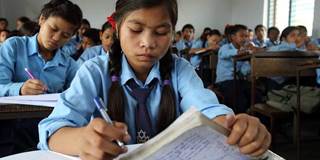Secondary Schools’ Primary Importance
A half-century of remarkable progress in providing primary education to children could be lost if we fail to provide opportunities for further schooling. Investing in secondary education in the developing world would have far-reaching benefits – and need not cost a fortune.
DHAKA – The world has made remarkable progress in providing primary education to children worldwide. In the 1960s, fewer than half of the developing world’s children were enrolled in primary school. Today, more than 90% are. In many regions, a higher proportion of girls than boys enroll in primary school. To be sure, too many children remain out of school in countries like Nigeria and Pakistan, but the real problem lies in what happens after the primary years are over.



DHAKA – The world has made remarkable progress in providing primary education to children worldwide. In the 1960s, fewer than half of the developing world’s children were enrolled in primary school. Today, more than 90% are. In many regions, a higher proportion of girls than boys enroll in primary school. To be sure, too many children remain out of school in countries like Nigeria and Pakistan, but the real problem lies in what happens after the primary years are over.